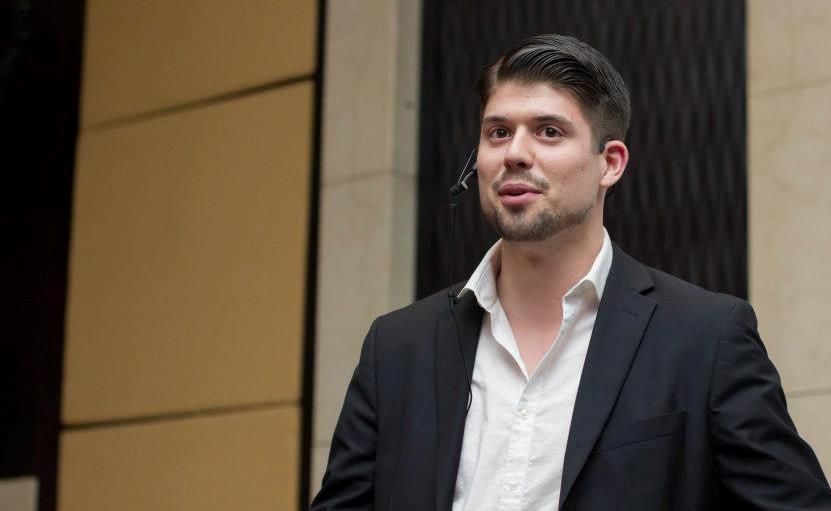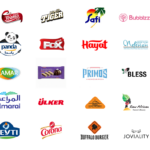First we all as Think Marketing Magazine team would like to thank you for this opportunity and express our real happiness and pleasure to have an exclusive interview with you.
When was Edge Rank Checker founded and what was your main aim then?
EdgeRank Checker was founded in February of 2011. At the time, Facebook provided an incredibly dismal set of metrics for their analytics. Posts would enter the news feed, pick up engagement and impressions in the news feed and that was about as much as Facebook would give an Admin. At f8 2010, Facebook displayed and discussed the EdgeRank algorithm. I was enthralled with the concept and was determined to figure out a way to see how it could be impacted.
Our aim was, and still is, to help marketers understand how to take advantage of Facebook’s news feed.
After releasing a small tool, it quickly gathered users from some of the largest brands in the world. I realized there was an incredible opportunity at hand. I jumped on the opportunity with two of my co-workers and the rest is history.
- Advertisement -
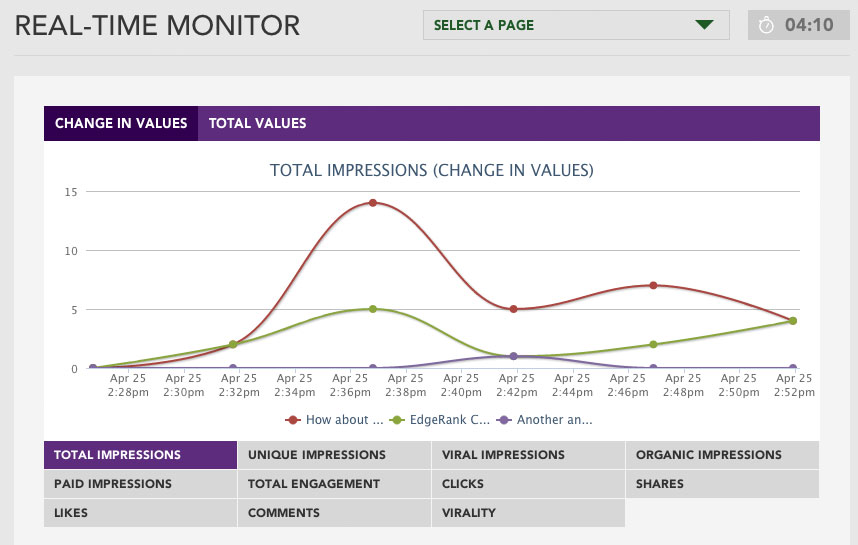
Our aim was, and still is, to help marketers understand how to take advantage of Facebook’s news feed.
How did you manage to get Facebook corporate with you along with convincing clients with the Edge Rank importance?
Marketers knew that the EdgeRank algorithm was important. The movement is similar to PageRank and SEO. This is about driving traffic and results organically via the news feed. It doesn’t take much convincing when people see an algorithm impacting their results. In my opinion, this is Organic SEO 2.0.
What is the main idea behind Edge Rank and how to use it to have a successful Social Media campaign and increase their fan’s engagement and eventually ROI?
EdgeRank is an algorithm developed by Facebook to determine what users see within their news feed. For Pages publishing on Facebook, this algorithm ultimately determines how many people are going to see your content. Brands that are taking advantage of this are Reaching 3-4x the amount of people than brands who are struggling.

Without diving deep into the mathematical components of the actual algorithm, it boils down to driving repeat and consistent engagement. Doing so will result in more exposure for your content. Facebook wants to reward brands, and specific pieces of content, that are performing well. We try to monitor this process to help brands take advantage of subtle aspects that can make improvements along the way.
Can you explain the impact of news feed redesign in Facebook and how will this impact Social Media monitoring and analysis?
The redesigned news feed is over-hyped. It is mostly a visual redesign with very little functional implications. Most users won’t experience any significant changes, in terms of browsing behavior. For brands, this means the game is the same and process is the same. Develop great content, publish it into the news feed and do what you can to optimize for engagement.
The only change I really see happening is for brands that invest in beautiful photography. Facebook users love photos, Facebook loves photos, brands that can play into this will reap more results.
There was a lot of debate about the fact that posting on Facebook from Hootsuite affects the Edge Rank, Is this true? How was this problem solved?
I personally don’t think this is an issue any more. Back in the day, this was a widely believed scenario. We even tested it and saw a mass decrease when using a 3rd Party API. A lot of the big publishers came out and complained about the issue. Long story short, it appears that Facebook fixed the issue and these 3rd Party APIs are inherently not being punished.
Because you can push out the same update to Twitter, LinkedIn, Google+, and Facebook all at the same time, doesn’t mean you should.
I will say that 3rd Party APIs offer an opportunity for Admins to be lazy. Just because you can schedule a post, doesn’t mean you should. Just because you can push out the same update to Twitter, LinkedIn, Google+, and Facebook all at the same time, doesn’t mean you should. I think when we study people using 3rd Party APIs now, we see more of the effects of users misusing any sort of automated publishing.
In summary, if you’re going to use 3rd Party APIs, use them right. If you do that, you’ll probably be fine.
What is an average virality rate for Facebook Page posts and how is it calculated?
We studied this awhile back and found that the typical Facebook Page experiences about 1.86% Virality. Facebook has been quoted as saying that around 1-2% is a good Virality rate to strive for.
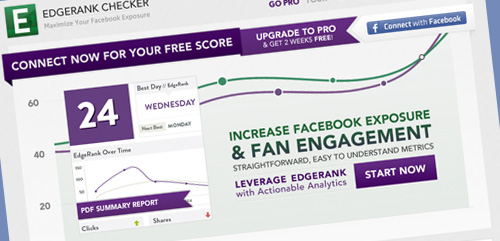
My issue with Virality is how Facebook defines it. The way Facebook defines Virality is more a measurement of how likely an object is to get engaged with. This isn’t quite my belief of Virality. The issue only compounds when you consider how EdgeRank works. As an object picks up engagement, it starts to pick up Reach. If a post has high early Virality, this means it is experiencing a high level of engagement per person Reached. However, if the post then picks up more Reach, due to this high level of engagement, it will then lose Virality. This is cycle that clouds the reality of what is truly “Viral”.
How can Edge Rank be used with Facebook Graph search and how can clients make use of such data to help them better analyze their Facebook performance?
Graph Search and EdgeRank are two different beasts. Graph Search is using different factors in order to determine the ranking of the search results. Graph Search also doesn’t use individual posts when looking at their input signals (currently). This creates a degree of separation between the two.
As it stands now, things like total fans and check-ins will definitely improve search results for businesses. Both of these things create Affinity with potential searchers. Affinity is always a good thing when dealing with Facebook.
If I were a business with a physical location, I’d be trying to build as many fans and check-ins as possible. Use check-in deals to help accelerate the process. This could pay off well in the future.
Would you please explain Edge Rank Negative Feedback analysis and why it is important and how it can be used?

Facebook came out last Fall to explain a significant change they made to the EdgeRank algorithm. Essentially, they increased the Weight of Negative Feedback. What does this mean? For Pages that were experiencing (or had experienced) high levels of Negative Feedback, this meant that they were losing Reach. Facebook wanted to even the playing field a bit and reward the Pages that weren’t receiving much Negative Feedback while punishing the Pages that were.
We opted to start analyzing and understanding Negative Feedback deeper than ever before. We’re trying to drive at why users would report something with Negative Feedback. Is it a particular topic? Perhaps the brand used Paid Media?
Understanding these components can better help a brand understand the direction to lead their content strategy. It’s also important to get a benchmark and keep Negative Feedback beneath certain thresholds.
Can you please tell us a little about PostAcumen and how does it help with competitive analysis?
PostAcumen is all about understanding the strategy behind competitive analysis. There are a million tools that will tell you how many fans, how many comments, etc… but what we strive for is why these things happened. What can I learn from my competition’s success and failures?
We’re analyzing industry sets, competitive sets, best in class sets, all in an effort to give a comprehensive understanding of the news feed. Some of our customers are even using it to pull out posts that received Paid Media, to determine where brands are putting forward some of their ad budget on Facebook.
We’re analyzing industry sets, competitive sets, best in class sets, all in an effort to give a comprehensive understanding of the news feed. Some of our customers are even using it to pull out posts that received Paid Media, to determine where brands are putting forward some of their ad budget on Facebook.
What do you think of Facebook plans to implement hash tags and will this affect Twitter’s traffic?
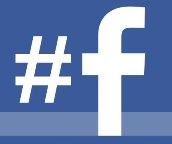
I think hashtags are mostly an advertising thing. I think they want to pull in particular hash tags (formalize this process) and allow marketers to advertise against it. I think it has way less to do with taking on Twitter or even attempting to steal their traffic. To me, Facebook & Twitter are two completely different platforms with two different paths. They can coexist and I don’t see a reason why one needs to consume the other.
In short order, I don’t think it’s particularly a big deal nor do I think it will significantly impact Twitter’s traffic.
